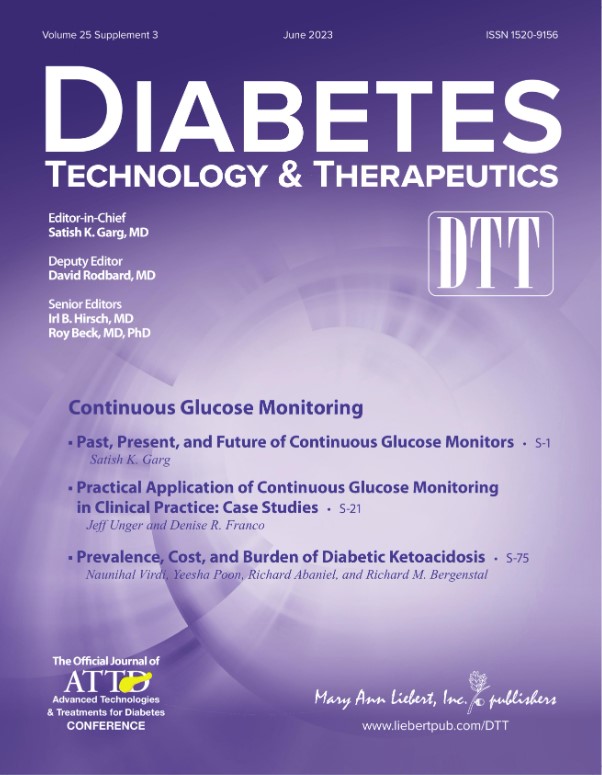Featured
Dexcom G7 was associated with significantly improved A1c at 3 and 6 months, reduced body weight and BMI at 3 months, and improved TIR, TAR, and mean glucose at months 2 through 6 (p<0.05). This evidence supports updated standards of care that recommend consideration of CGM use in people with T2D not on insulin.
Learn MoreIn a large national federal cohort, initiation of CGM was associated with lower mortality in patients with type 2 diabetes (T2D) using insulin. Risk for mortality was lower in CGM users, as were risks for all-cause hospitalization, cardiovascular events, and admissions for hyperglycemia. These findings suggest that CGM may offer benefits beyond glycemic control, even for patients with T2D receiving less intensive treatment.
Learn More
This article addresses significant disparities in diabetes care within the United States, focusing on the underdiagnosis, undertreatment, and worse health outcomes experienced by minority populations, particularly Black and Hispanic individuals. It highlights the underutilization of Continuous Glucose Monitors (CGMs), a technology proven to improve diabetes management, despite clinical and economic benefits. The authors identify barriers to equitable access to CGMs, including high costs, insurance coverage limitations, and provider-level biases that result in less frequent discussions of this technology with minority patients. Finally, the writers propose policy changes by both private and public insurers and the increased promotion of patient education programs as crucial steps to reduce these disparities and enhance diabetes care for all.
Click here to watch the accompanying videos.
As many health plans transition to a value-based diabetes care approach, there is a need for standardized quality measures to assess and benchmark performance. This article addresses key topics to support the adoption of continuous glucose monitoring (CGM) technology in these efforts.
- Transition from Fee-for-Service to Value-Based Care
- Integration of Glucose Management Indicator (GMI) into 2024 NCQA HEDIS Measures
- Impact of CGM on Health Plan Quality Scores & Reimbursement
- Call for Health Systems and Plans to Collaborate with Electronic Health Record Developers

Prescribing of CGM in clinical practice and payer coverage criteria have expanded considering the wealth of evidence and expert recommendations supporting more widespread use. As the body of evidence continues to grow, a new supplement in Diabetes Technology & Therapeutics offers insights from leading clinicians on the latest findings and practical application of CGM. The supplement highlights real-world evidence and the unique role of CGM in the management of hypoglycemia and enhancing behavior modification among users of the technology. Special consideration is given to the economic impact of CGM and access issues that may be of particular interest to payer and managed care decision makers.
The articles included:
Past, Present, and Future of Continuous Glucose Monitors Satish K. Garg
Continuous Glucose Monitoring Impact and Implications of Real-World Evidence: Past, Present and Future James R. Gavin III and Clifford J. Bailey
What Role Might There Be for Continuous Glucose Monitoring in the Assessment of Diabetes Risk? Eden Miller, William H. Polonsky and Kevin Miller
Practical Application of Continuous Glucose Monitoring in Clinical Practice: Case Studies Jeff Unger and Denise R. Franco
Advancements in Diabetes Technology Are Outpacing the Evidence Michael Rickson, Eugene E. Wright Jr., Anila Bindal and Laith Ghonim
One Size Fits All Versus Individualized Medicine in Type 1 Diabetes Management L. Kurt Midyett
Is Continuous Glucose Monitoring a Tool, an Intervention, or Both? Eugene E. Wright Jr. and Savitha Subramanian
Continuous Glucose Monitoring Use in Older Adults for Optimal Diabetes Management Medha N. Munshi
Personalized Glycated Hemoglobin in Diabetes Management: Closing the Gap with Glucose Management Indicator Timothy C. Dunn, Yongjin Xu, Richard M. Bergenstal, Watru Ogawa and Ramzi A. Ajjan
Prevalence, Cost, and Burden of Diabetic Ketoacidosis Naunihal Virdi, Yeesha Poon, Richard Abaniel and Richard M. Bergenstal

Source: The Journal of the American Medical Association
Authors: Monica E. Peek, MD, MPH, MS; Celeste C. Thomas, MD, MS
“…the studies by Karter et al. and Martens et al. provide additional evidence that patients with type 2 diabetes benefit from the use of CGM in terms of improved HbA1c level, time spent in the target blood glucose range, and reduced hypoglycemic episodes…”
“…institutional changes that promote its use in primary care will go a long way to improving diabetes control and reducing complications, particularly among the populations most in need. The time has come to broaden access to CGM for patients with type 2 diabetes.”
Learn More
- 1
- 1-8 of 8 results